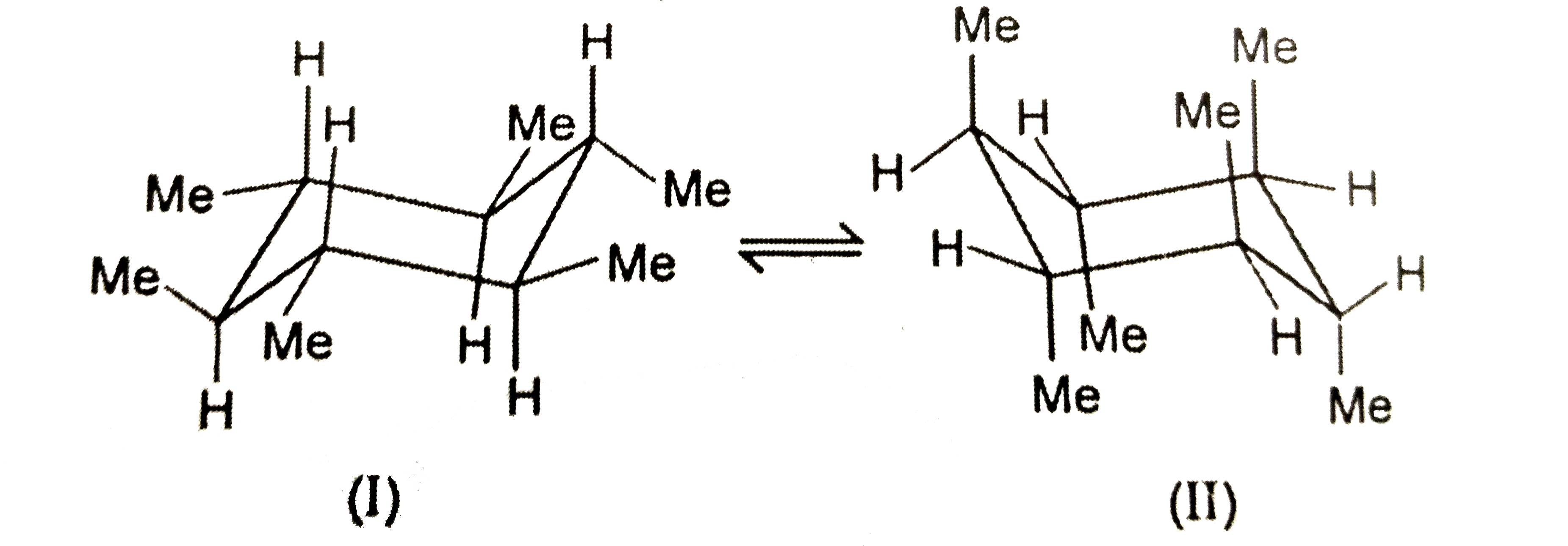A crystal may have one or more planes and one or more axes of symmetry but it has:
Two centre of symmetry
One centre of symmetry
No centre of symmetry
None of these
The correct Answer is:B
To solve the question regarding the symmetry in crystals, we need to understand the concepts of planes of symmetry, axes of symmetry, and the center of symmetry.
1. Understanding Symmetry in Crystals:
- A crystal can exhibit various types of symmetry, including planes of symmetry and axes of symmetry.
- A plane of symmetry is an imaginary plane that divides the crystal into two mirror-image halves.
- An axis of symmetry is an imaginary line around which the crystal can be rotated to produce a configuration that looks the same as the original.
2. Defining Center of Symmetry:
- The center of symmetry (also known as the inversion center) is a specific point in the crystal structure.
- It is defined as a point such that for any point in the crystal, there is an identical point located directly opposite to it at an equal distance from the center.
3. Analyzing the Number of Centers of Symmetry:
- In a crystal, there can be multiple planes and axes of symmetry, but the center of symmetry is unique.
- This is because the center of symmetry must be equidistant from all corresponding points in all directions.
4. Conclusion:
- Therefore, regardless of how many planes or axes of symmetry a crystal may have, it will always have only one center of symmetry.
Final Answer:
A crystal may have one or more planes and one or more axes of symmetry, but it has only one center of symmetry.
---
- A crystal can exhibit various types of symmetry, including planes of symmetry and axes of symmetry.
- A plane of symmetry is an imaginary plane that divides the crystal into two mirror-image halves.
- An axis of symmetry is an imaginary line around which the crystal can be rotated to produce a configuration that looks the same as the original.
- The center of symmetry (also known as the inversion center) is a specific point in the crystal structure.
- It is defined as a point such that for any point in the crystal, there is an identical point located directly opposite to it at an equal distance from the center.
- In a crystal, there can be multiple planes and axes of symmetry, but the center of symmetry is unique.
- This is because the center of symmetry must be equidistant from all corresponding points in all directions.
- Therefore, regardless of how many planes or axes of symmetry a crystal may have, it will always have only one center of symmetry.
A crystal may have one or more planes and one or more axes of symmetry, but it has only one center of symmetry.
Topper's Solved these Questions
- THE SOLID STATEBOOK - VMC MODULES ENGLISHCHAPTER - THE SOLID STATEEXERCISE - IMPECCABLE
49 Videos
- THE SOLID STATEBOOK - VMC MODULES ENGLISHCHAPTER - THE SOLID STATEEXERCISE - ILLUSTRATIONS
24 Videos
- THE SOLID STATEBOOK - VMC MODULES ENGLISHCHAPTER - THE SOLID STATEEXERCISE - ENABLE
50 Videos
- SURFACE CHEMISTRYBOOK - VMC MODULES ENGLISHCHAPTER - SURFACE CHEMISTRYEXERCISE - PRACTICE EXERCISE
9 Videos
- THEORY OF SOLUTIONSBOOK - VMC MODULES ENGLISHCHAPTER - THEORY OF SOLUTIONSEXERCISE - JEE Advanced (Archive)
31 Videos
Similar Questions
Knowledge Check
Which of the following figures has only one line of symmetry ?
AA rectangleBA parallelogramCAn isosceles trapeziumDA circle
Which letters of the English alphabet have :
one horizontal and one vertical line of symmetry
View SolutionThe differential equation of all parabolas having their axes of symmetry coincident with the axes of x, is
View SolutionA : All crystals of same substance possess the same elements of symmetry.
R : The size of crystal of same substance may vary depending upon the conditions of crystallisation.
View SolutionVernier constant is the (One or more than one correct option may be correct )
View SolutionWhich one has more free energy
View SolutionEntries of Column-I are to be matched with entries of Coloumn-II. Each entry of Column-I may have the matching with one or more than one entries of Column-II.

View SolutionEntries of Column-I are to be matched with entries of Coloumn-II. Each entry of Column-I may have the matching with one or more than one entries of Column-II.

View Solution

